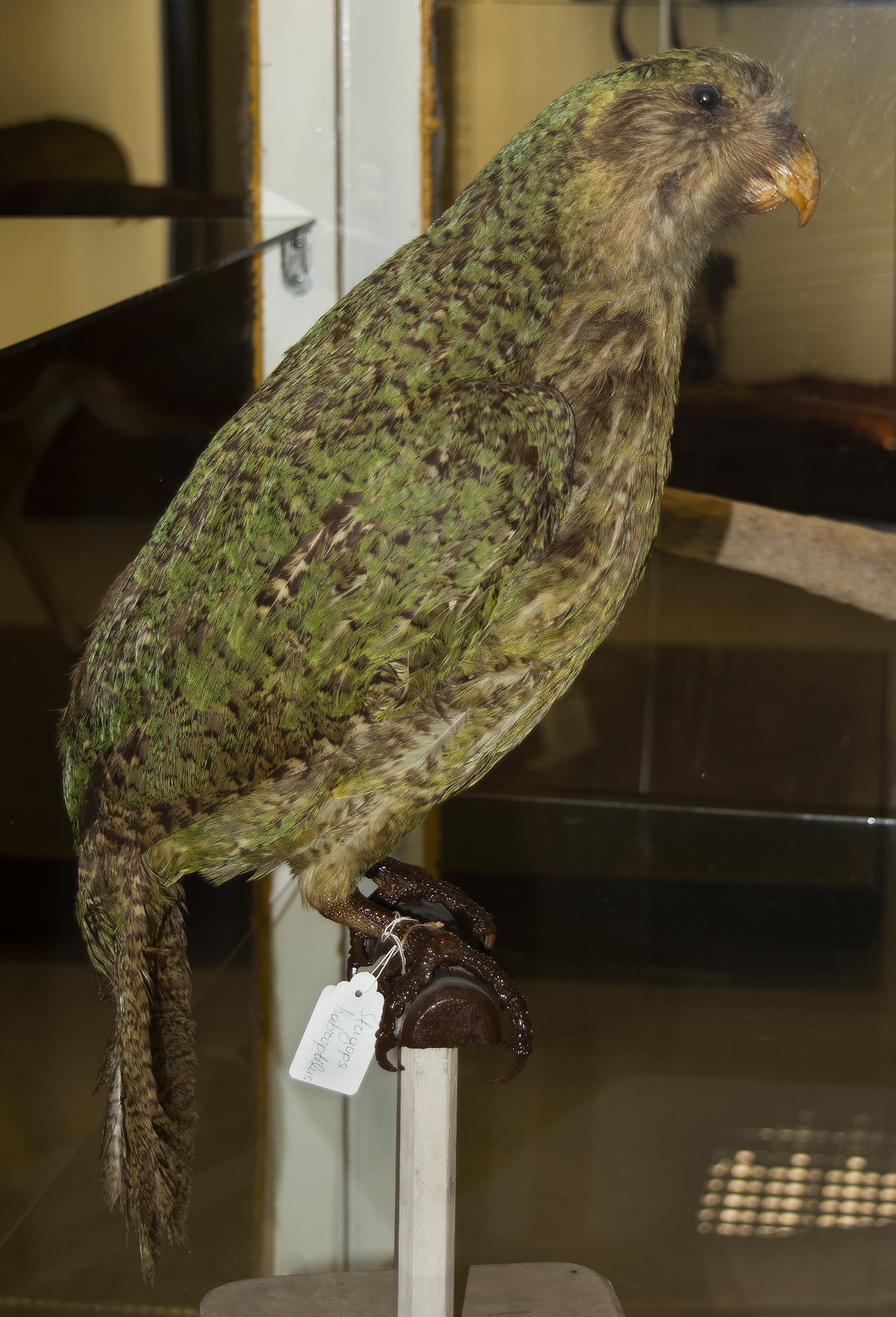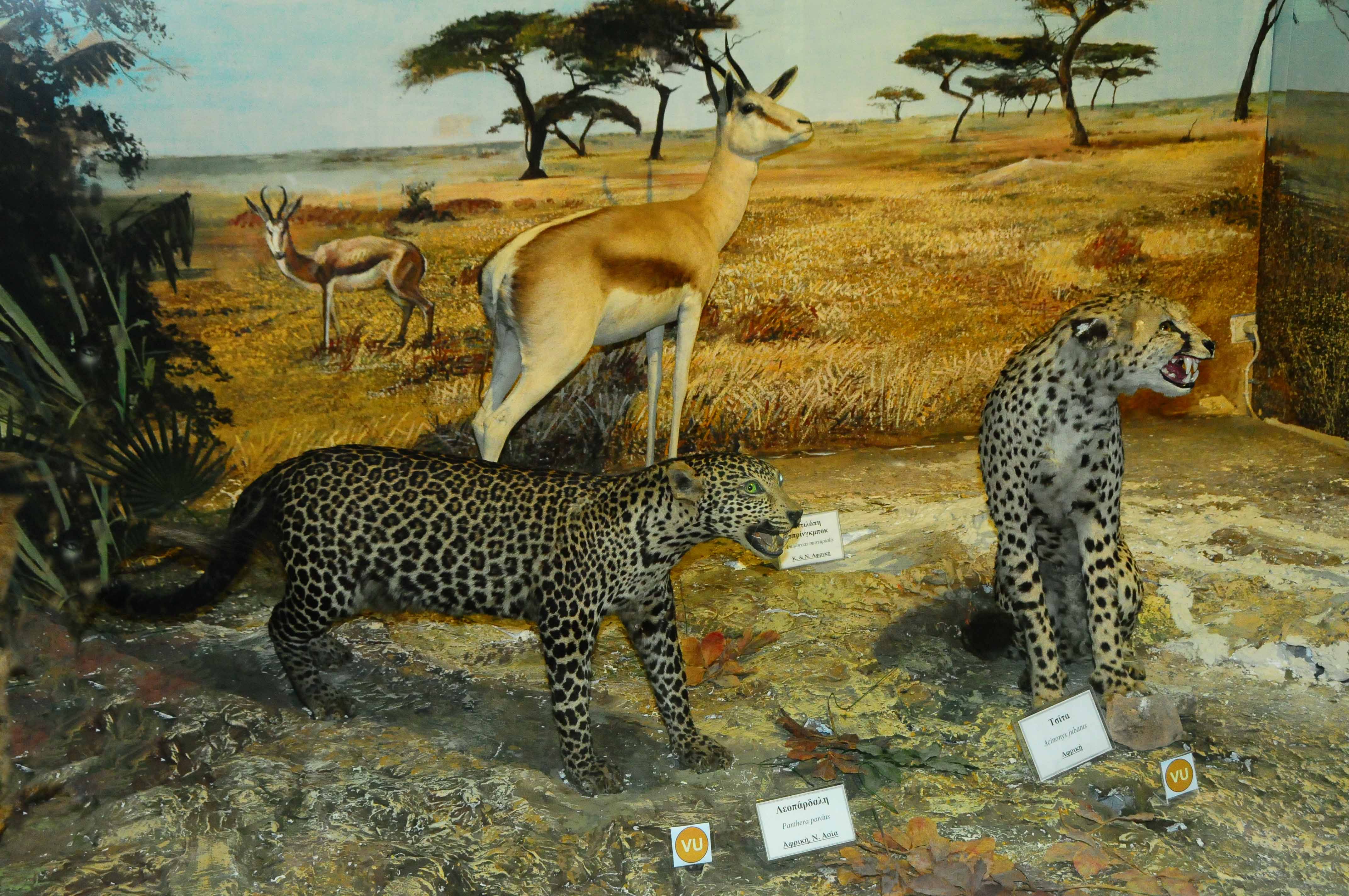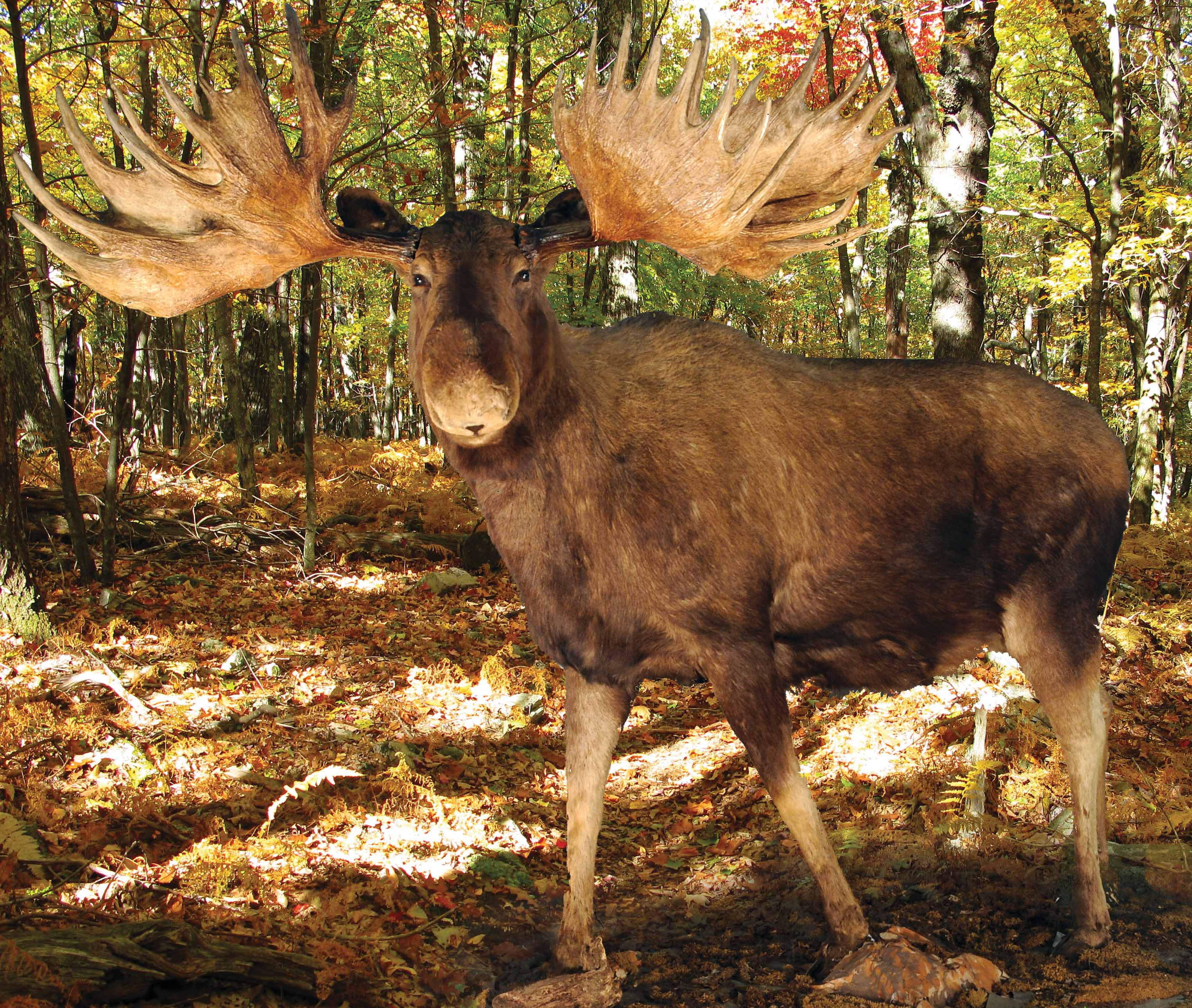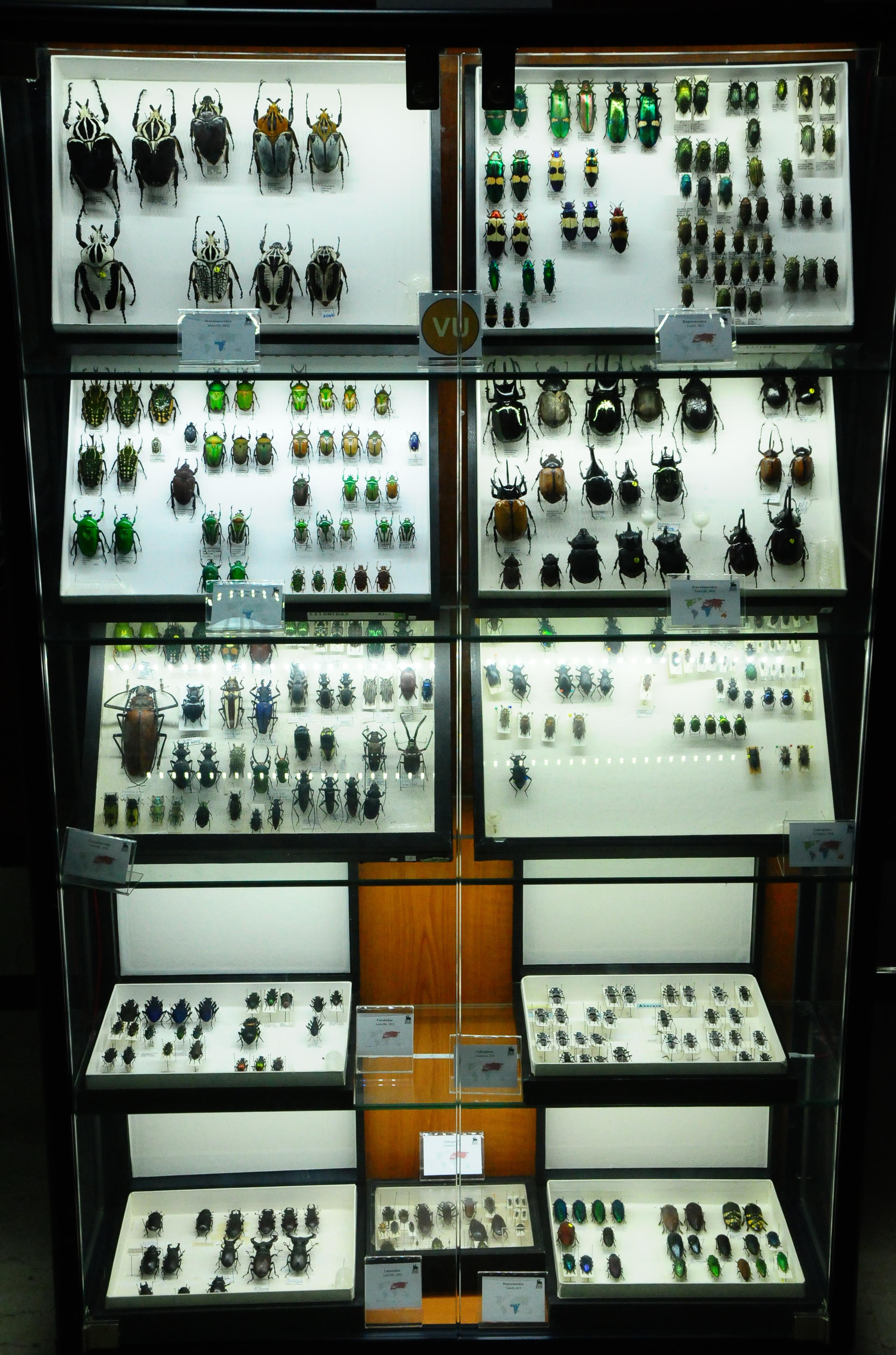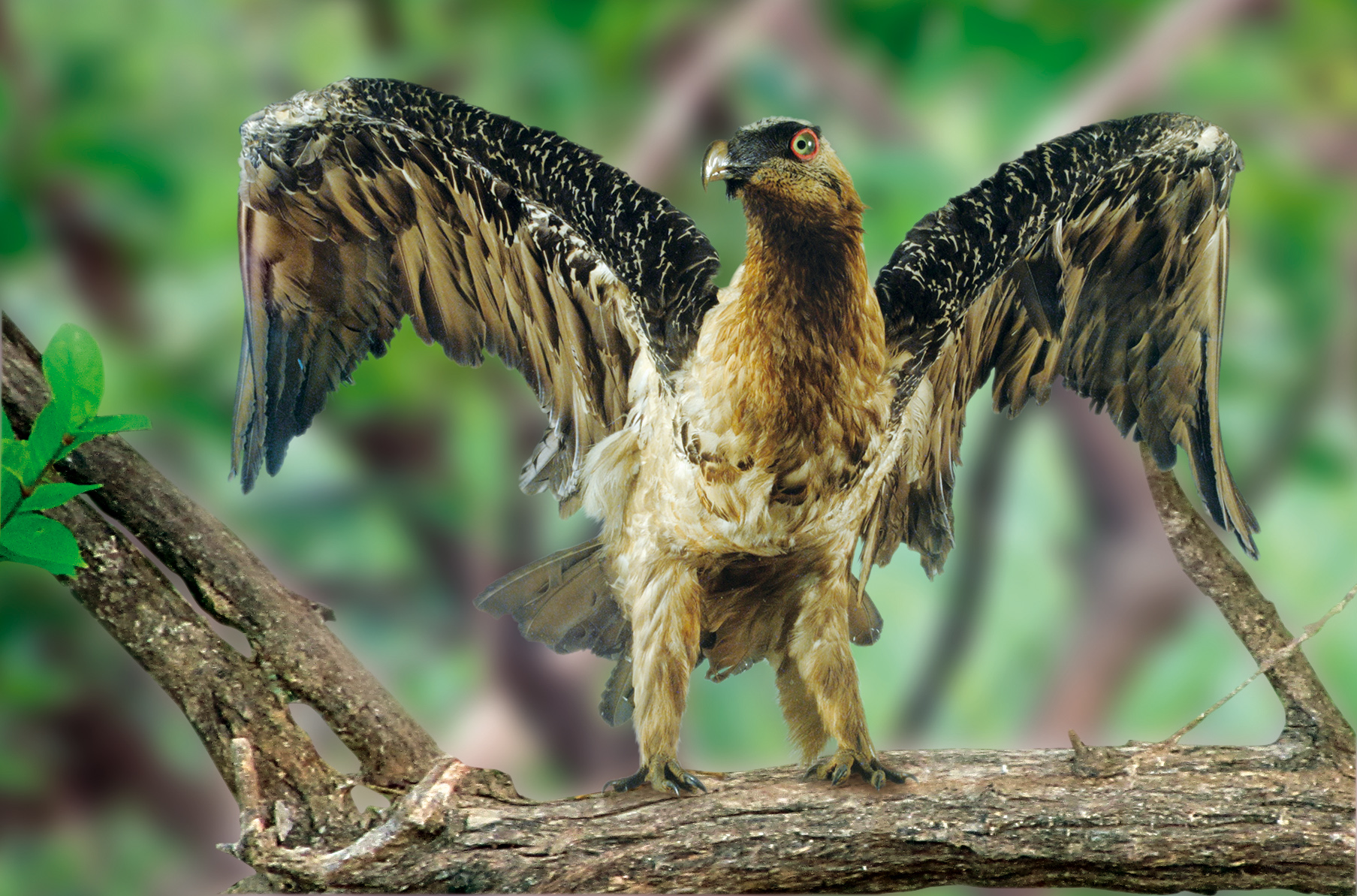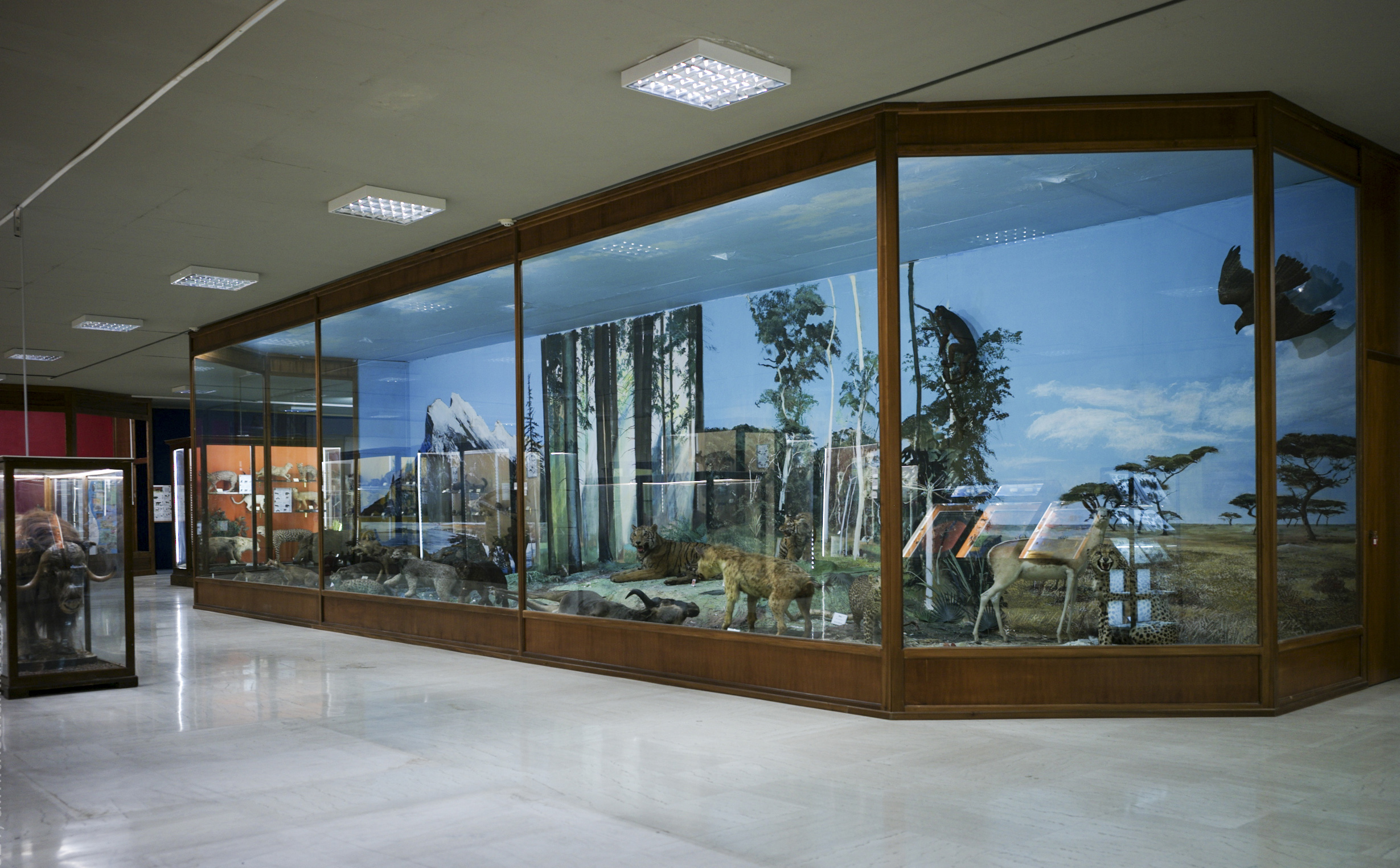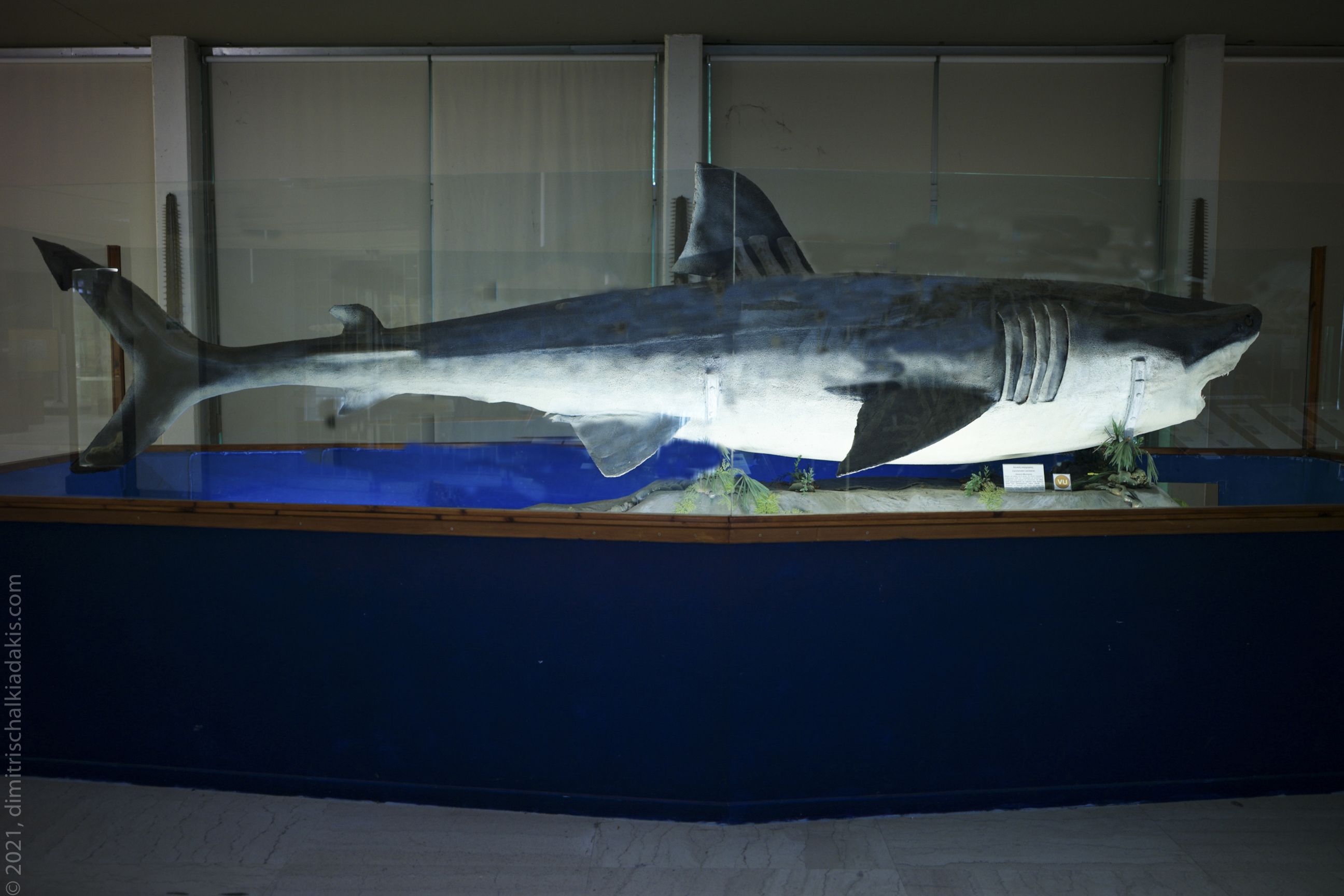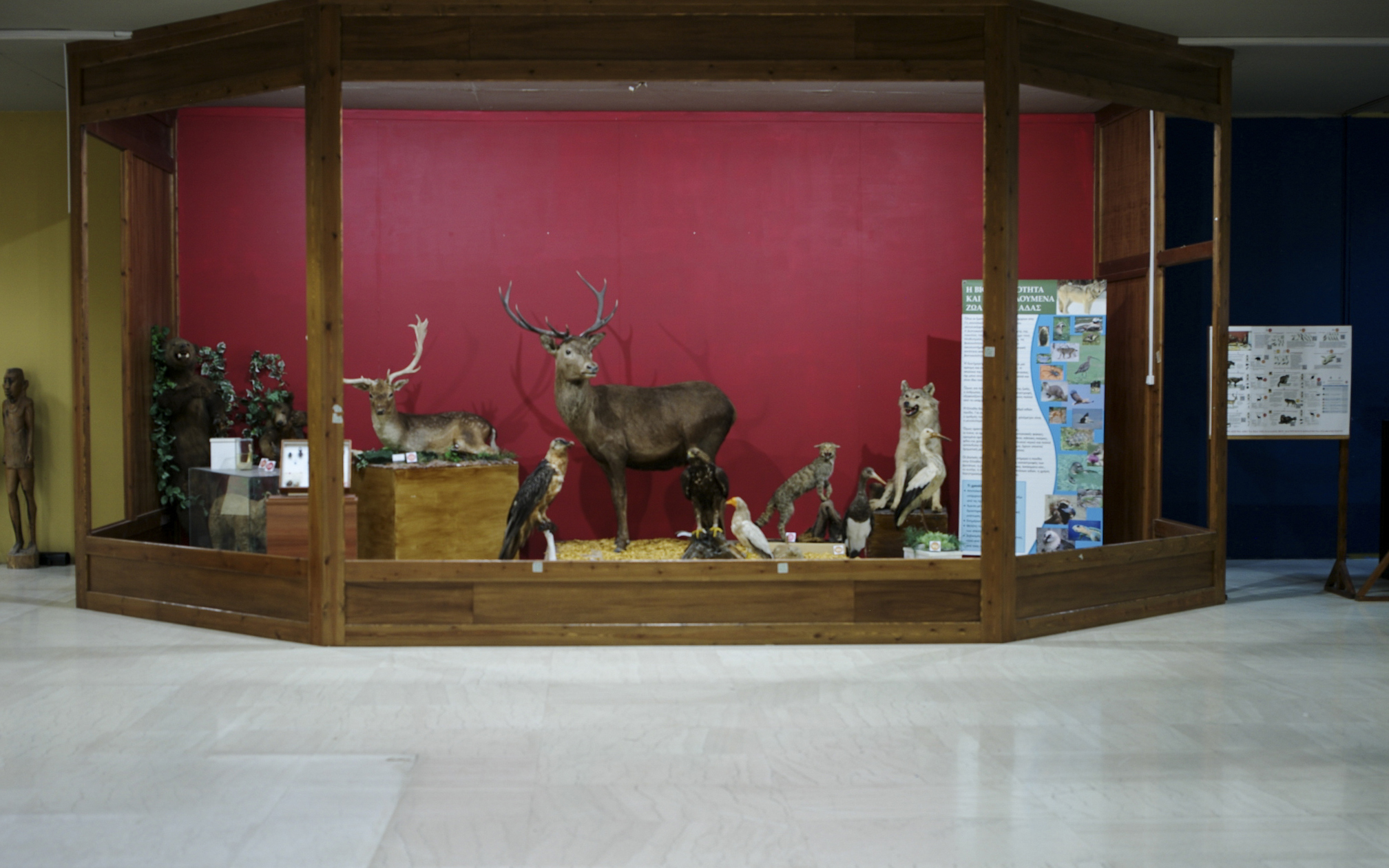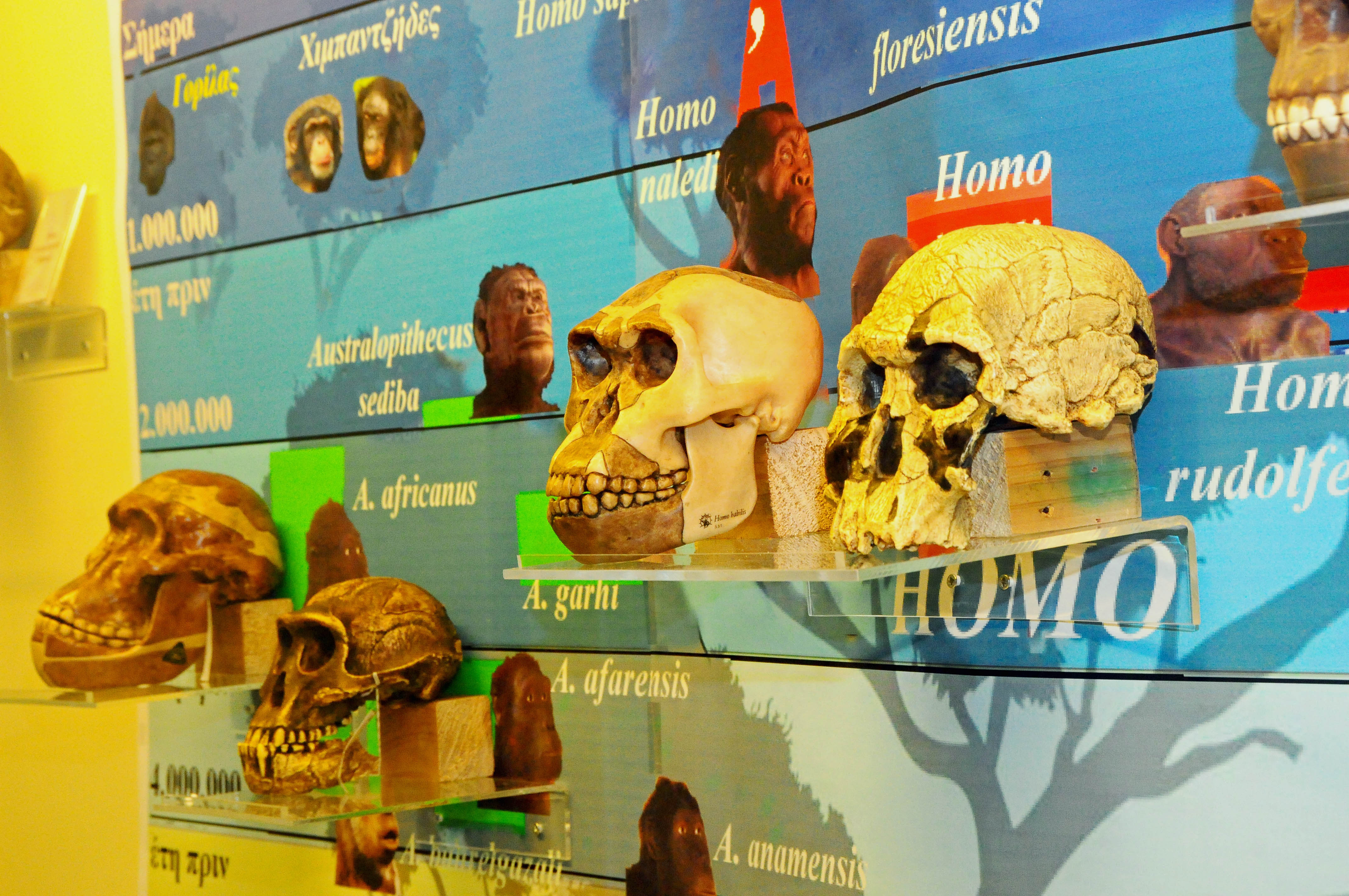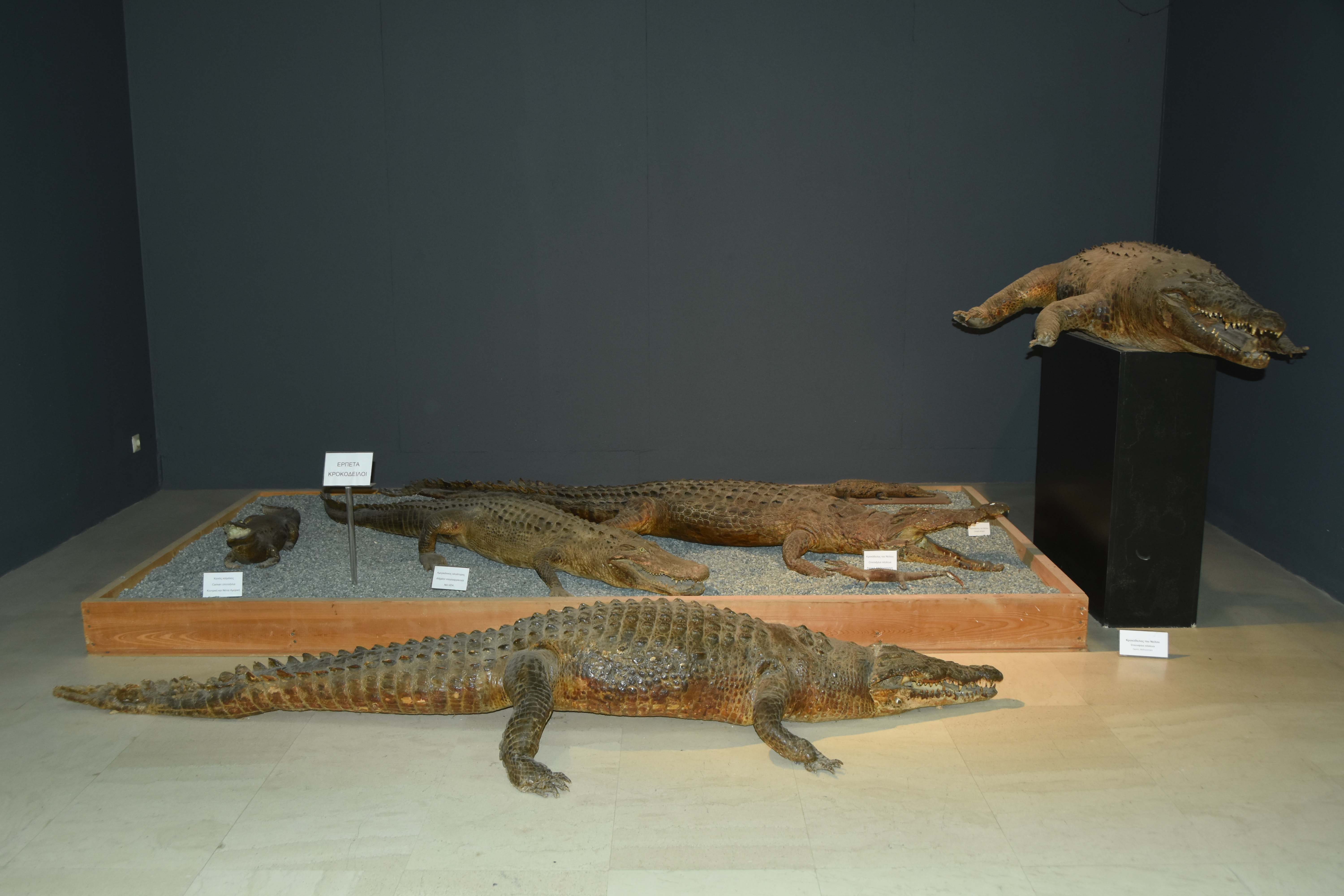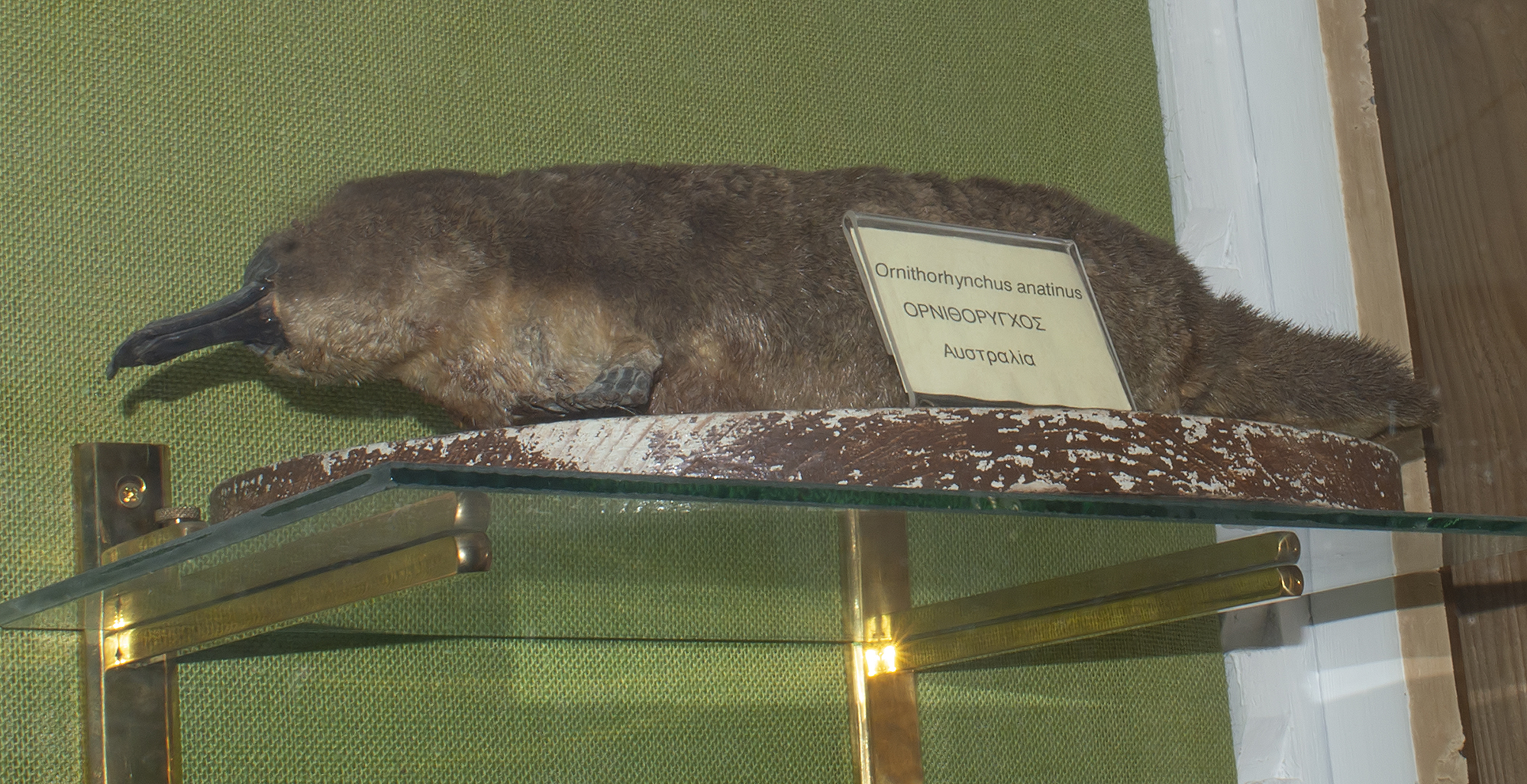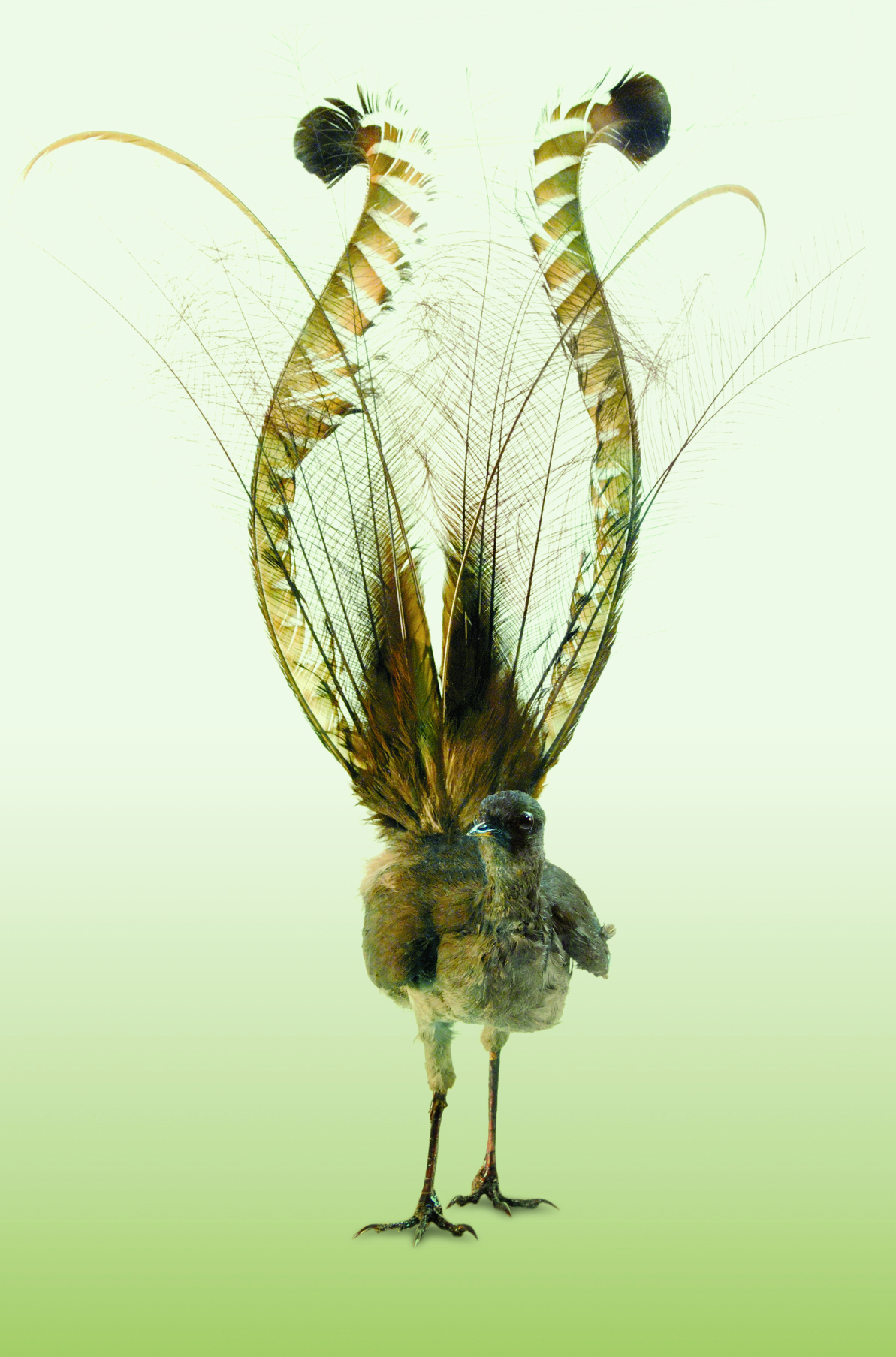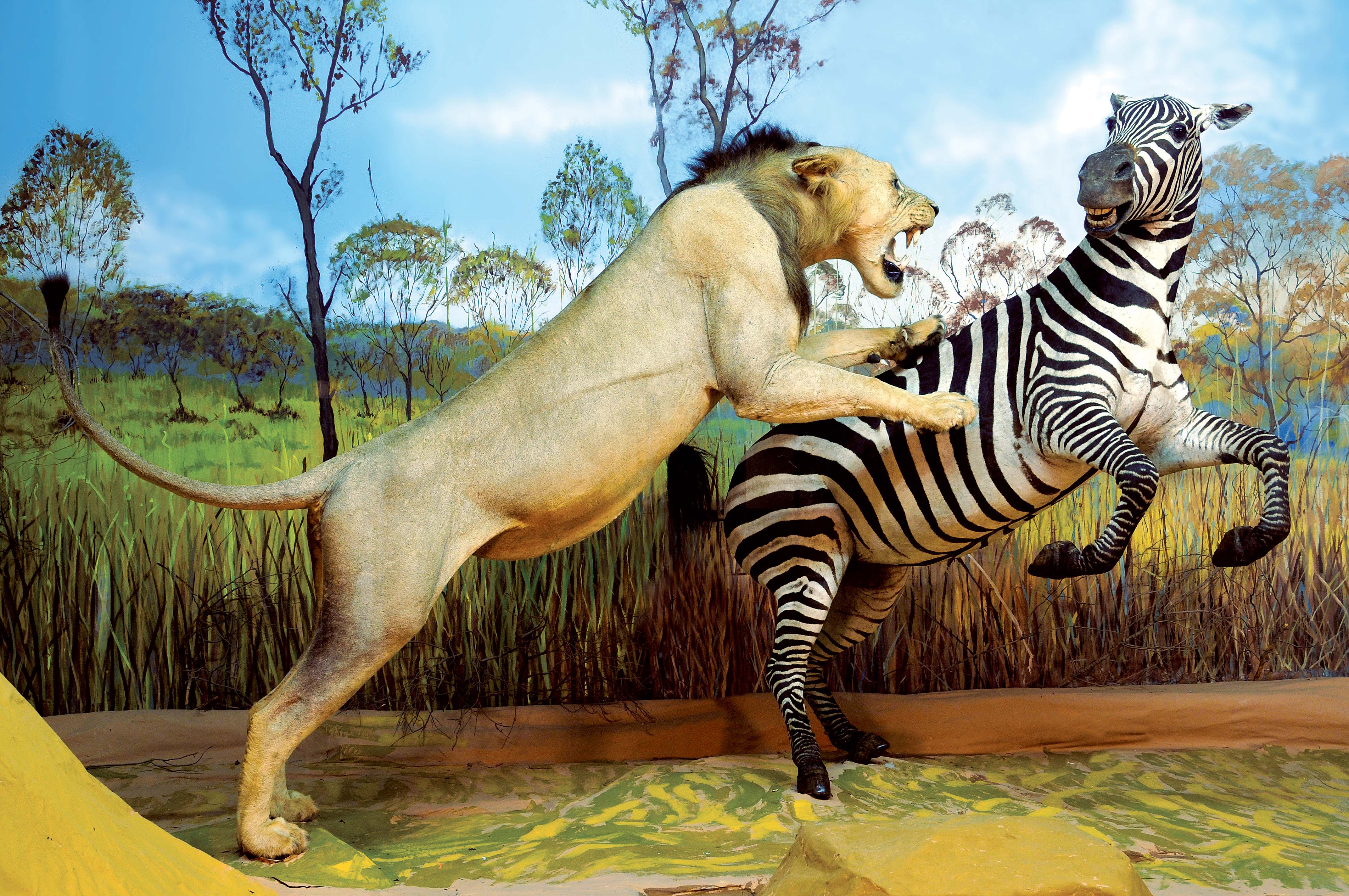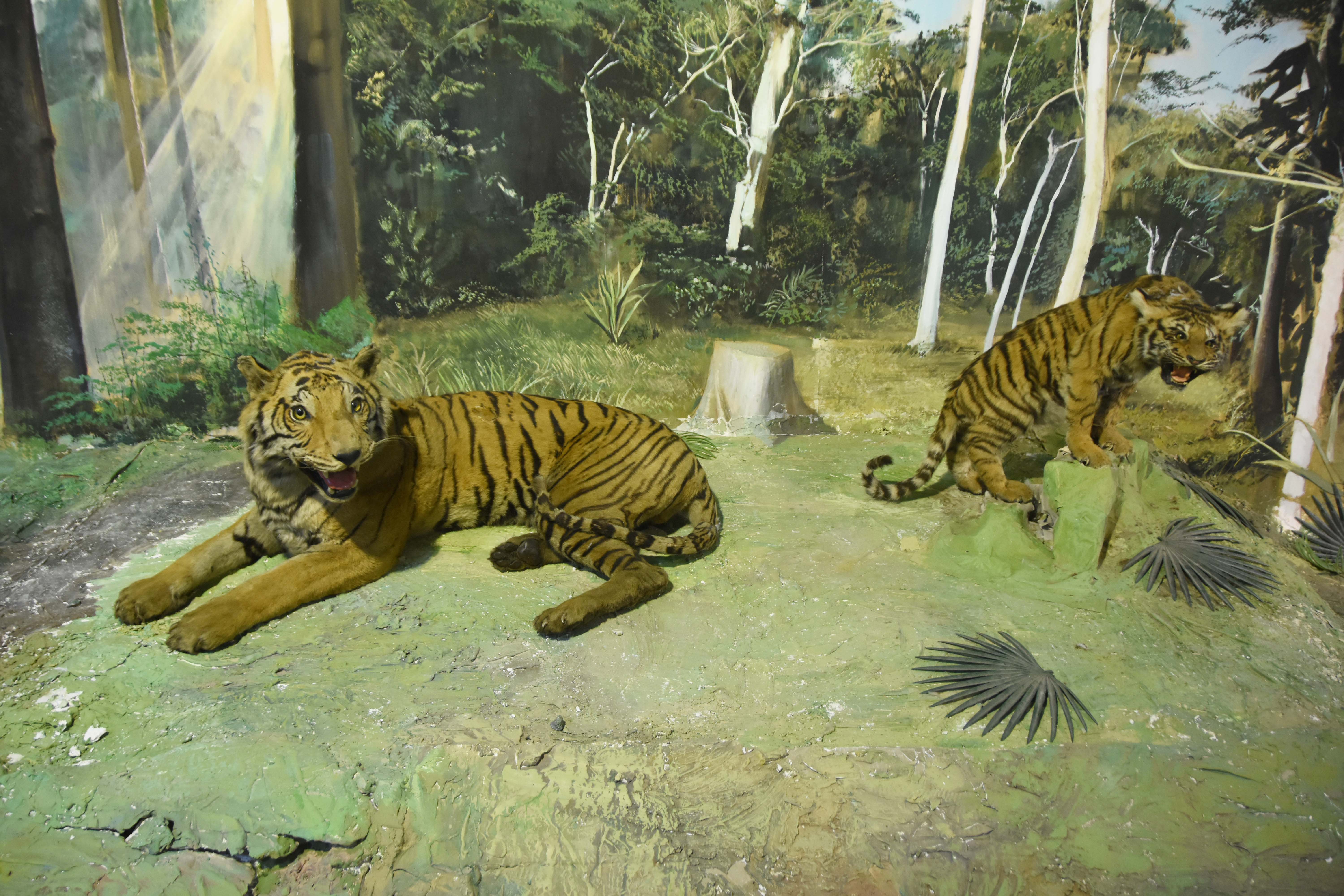Identity
The Museum's objectives are:
Research: Ecology, Systematics, Biogeography, Biology Protection of various animal groups.
Education: Student training in Zoology, Biodiversity, Fauna of Greece, and Natural Anthropology – Training of Technological Educational Institute students in conserving organic material – Practical training of students - Training of Secondary Education Teachers - Environmental education for students.
Public information: Visits for primary and secondary school students, university students, and others – Press publications – Interviews and tv presentations – collaboration with environmental organizations for the promotion of their work.
Collections' management: Preservation of the Greek natural heritage – Data banks and bibliography compilations of Greek fauna and endangered and rare animal species– Enriching, conserving, documenting the Museum's content.
Library: The Museum's library includes many old and rare zoological books and magazines from all over the world. It also carries modern manuals, guidebooks, key classifications, magazines, etc.
Organizing conferences and workshops, etc.: The Museum has two lecture halls that can accommodate small meetings or seminars. Also, the Museum can host periodic art exhibitions or book exhibitions.
History
The Athens University Zoological Museum is around 160 years old. It is the first and most comprehensive of its kind in Greece. The history of the Museum begins almost at the same time as the history of Athens as the capital of the newly established Greek State. The core of the Museum preceded the foundation of the University of Athens in 1837. Specifically, in 1835, Greeks and Bavarians, mainly scholars who lived in the Greek State, established the Physiographic Society in Athens, which compiled many physiographic collections with animals, plants, minerals, and fossils. Since the foundation of the University in 1837 and because of financial difficulties, the Physiographic Society began to donate the material of these collections to the University. In 1858, the Physiographic Museum of the University of Athens was created, with the collections of the (future) Zoological Museum as its center. Until the end of the 19th century, its members and associates were dedicated to compiling, studying, and exhibiting the zoological collections, fulfilling the Museum's dual role, to educate and amuse the public, especially the young people. When modern audiovisual media were non-existent, the unique Zoological Museum functioned as a pole of attraction for many visitors and an essential factor in the overall education of the newly established Greek State and its growing capital. Greek and foreign Greek fauna researchers, amateur collectors, wild animal hunters, and many more yielded the findings, the collections. In the 20th century, the Museum continued to grow, and together with the Laboratory of Zoology, it functioned as the core of the zoological sciences education of the Athens University students. In the 1930s, under the direction of the late Professor G. Pantazis, the magazine "Acta lnstituti et Musei Universitatis Atheniensis" is published. The Museum suffered gravely during the occupation, and after the end of the war, lack of funds and space prevented any modernization, growth, or renewal. Since the early 1960s, the Museum had been closed to the public because of the needed major repairs at the building that housed it. In 1965, the exhibits and scientific collections were transferred to scattered storage spaces on campus. After the construction of the new building of the Department of Biology, the Museum of Zoology finally occupied ample spaces, and as of 1991, it progressively started to exhibit, mainly to the students, part of its rare and valuable exhibits while it continued to grow with new collections such as the collection of mammals and birds, donated by the Papalios family. Today, the Museum welcomes more than 10,000 students annually, while it continues to upgrade the Exhibition using audiovisual equipment and improve its spaces.
Types of audiences
The Museum is addressed on the one hand to the general public and the other hand to primary and secondary school students and university students. The main objective is for the public to comprehend the value and importance of biodiversity so that its preservation and protection becomes common knowledge. In addition, young visitors get to know the wonderful world of animals from up close when all access to animal diversity is available mainly electronically.
Collections & Exhibitions
All the exhibits of the Museum can be considered important since they present different aspects of biodiversity. For example, the Exhibition of Birds reveals the multitude of colors and shapes that these flying inhabitants of the planet have. The Exhibition of Mammals includes some of the largest animals on earth (whale, giraffe, lion tigers, polar bears, giant Deer). The same applies to reptiles (crocodiles, giant snakes) and fish (shark, skates). The skull exhibition of the ancestral forms of man enables the understanding of our evolution. Finally, the Exhibition of invertebrates comprises a wonderful spectrum of colors and shapes.
Events & Activities
The Museum organizes educational programs for secondary school students, participates in organizing student competitions in collaboration with other museums of the University of Athens (e.g., History), organizes workshops, conferences, lectures, etc. At the same time, on the world days related to the Museum's mission, it organizes relevant events (e.g., Day of Biodiversity, Environment, Animals, Museums, etc.).
Accessibility
Access for physically challenged people is via elevator through the central gate of the School of Sciences. An NKUA competition is already underway for the installation of lifts that will allow direct access.
Terms of Operation
Daily: Opening hours: 9:00 - 15:00 (group visits upon request) Access: Bus 250 (Evangelismos- Panepistimioplis-Campus, stop Museums) from Evangelismos Station, Bus 608 (Galatsi-Zografou Cemetery), about 500 meters from the terminal (Zografou Cemetery) within the University Campus. Access by car is from the Main Entrance of the University Campus (Olof Palme). Saturday- Sunday Holidays: The Museum is open on occasion and there are appropriate announcements.
Director:Efstratios D. Valakos, Professor, Department of Biology.
Decision of Establishment
NEWSPAPER OF THE GOVERNMENT OF THE KINGDOM OF GREECE. No.43/19/9/1858

